This Green Entrepreneur’s IOT Biogas Plants Fuel Kitchens at Rashtrapati Bhavan, Hewlett Packard, NTPC & more.
Founder of Greeneria Renwable Technology, Bengaluru-based Rajendra Kumar has transformed India’s urban waste management with IoT-equipped biogas projects
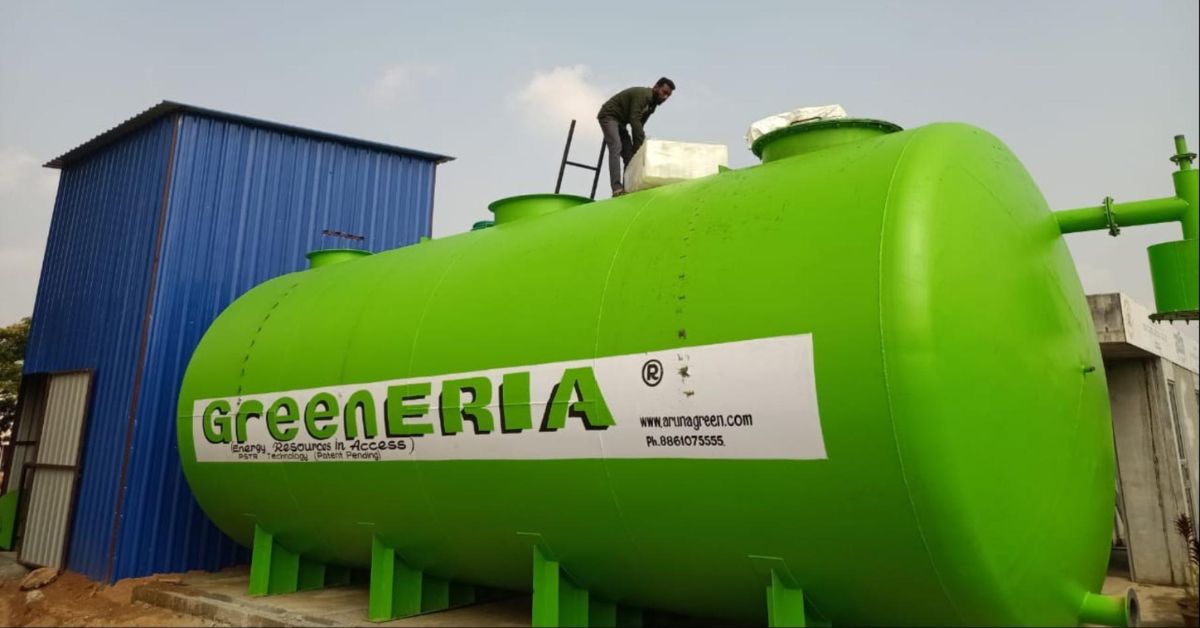
This article is in partnership with Greeneria Renewable Technologies
In the bustling country of India, where rapid urbanisation meets the challenges of waste management, this visionary man from Bengaluru has been transforming the landscape for decades.
Meet M S R Kumar, a mechanical engineer with a global perspective, who, after nearly two decades abroad, returned to India with a mission — to introduce efficient waste management practices in the country’s urban areas using biogas plants.
His journey began with a realisation inspired by the success of biogas initiatives he witnessed in Canada and Germany. Despite facing initial scepticism about the feasibility of urban biogas in India, he founded Greeneria in 2014 to champion this cause.
Greeneria is part of the Indian Biogas Association (IBA), which is instrumental in forming various policies along with ministries like the Ministry of New and Renewable Energy (MNRE), Petroleum Ministry, and Ministry of Water and Sanitation. The association played a pivotal role in initiating the SATAT programme and the GOBARdhan initiative.
Greeneria’s projects, equipped with IoT technology, are spread across India — from Rashtrapati Bhavan and major IT companies like Hewlett Packard and Capgemini to shopping malls like Forum and residential complexes. Greeneria proudly shares that they hold the record for the largest residential biogas system in India, providing a sustainable solution to Prestige Jindal City in Bengaluru.
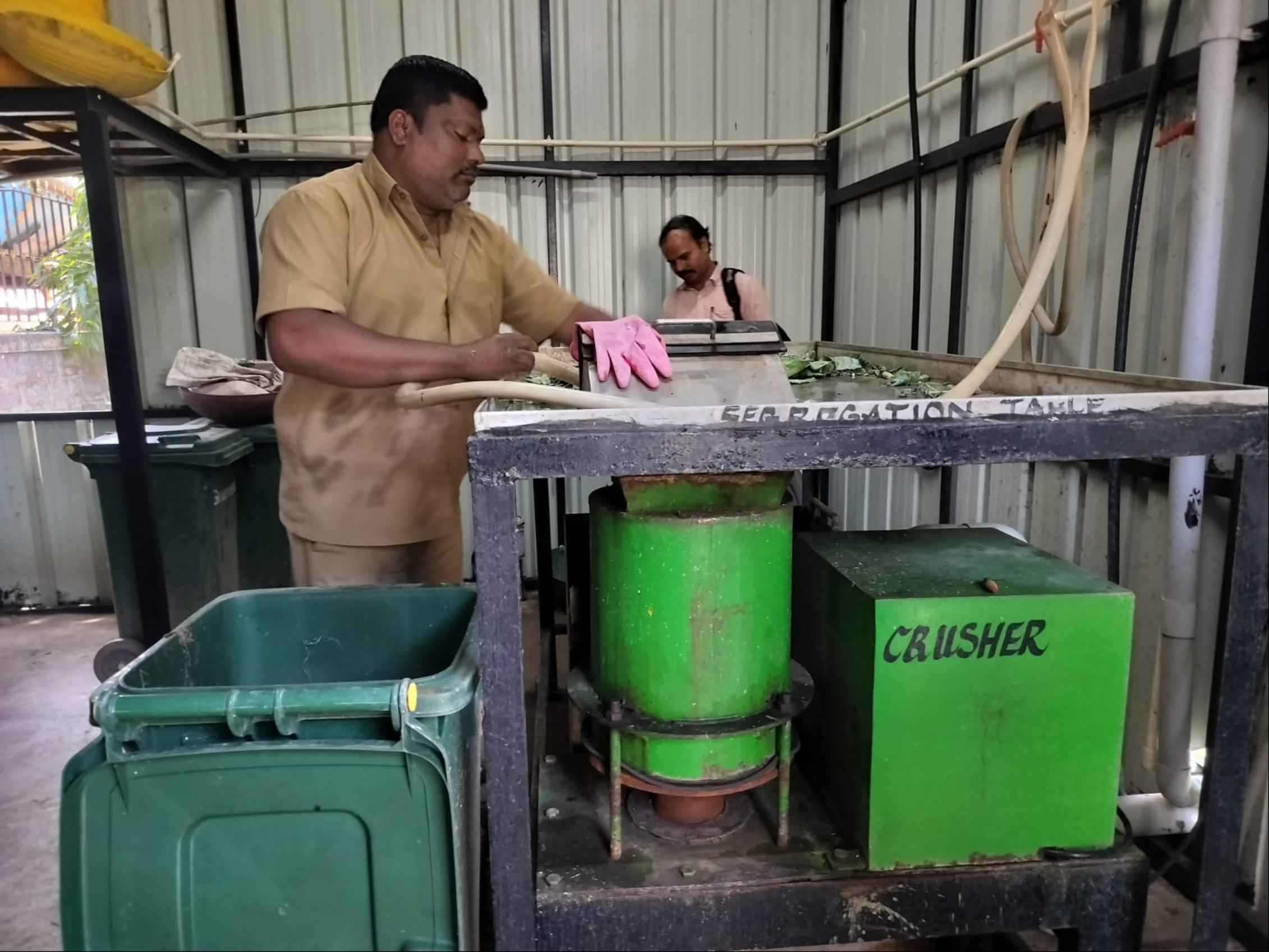
The rise of biogas systems in urban waste management
“During my time abroad, I observed efficient waste management practices, particularly biogas plants in urban areas. This inspired me to bring similar practices to India,” says Kumar, who returned to India in 2012 with this purpose.
Motivated by the higher yield of biogas from urban waste (4%) compared to rural cow dung (2%), he advocated for its adoption in urban settings.
The SATAT scheme promotes entrepreneurs to establish Compressed Bio Gas (CBG) plants. These plants produce and supply CBG to Oil Marketing Companies (OMCs) for use as automotive and industrial fuels. The GOBARdhan initiative involves various schemes and policies, focusing on converting organic waste — such as cattle dung and agricultural residue — into biogas, Compressed Biogas (CBG), and Bio CNG.
Kumar shares that the Swachh Bharat Mission is a landmark in India’s waste management policies, and that one of their achievements coincided with the launch of the mission — the introduction of the Solid Waste Management Rules 2016. Kumar explains that this regulation, particularly the Bulk Waste Generator Rule, became a game-changer for urban waste management.
“The Bulk Waste Generator Rule is crucial because, in any metropolitan area, 60% of waste comes from bulk generators, with only 40% originating from individual households,” he says explaining that the 60% of bulk waste generators include places like fruit and vegetable markets, tech parks, wedding venues, shopping malls, apartments, hotels, restaurants and more.

If these generators handle their waste on-site itself, 60% of waste can be stopped from ending up in landfills, preventing environmental issues. Landfills are harmful, especially if organic waste ends up there, leading to pollution, groundwater contamination, and health problems, he shares.
Elaborating on the significance of the rule, he shares, “Let’s consider each apartment producing one kg of waste. If there are 100 apartments, they collectively generate 100 kg of waste. According to the rule, any apartment complex with 100 or more units must implement a waste management system; otherwise, they won’t receive an occupational certificate.”
He adds, “Bulk Waste Generators (BWG), who were initially indifferent, started showing interest because compliance with this rule became necessary for obtaining occupancy certificates and other licences.”
He adds that this rule became a significant regulation, especially for managing organic waste, which is a major challenge. Unlike inorganic waste like plastic and paper, which can be easily recycled for profit, organic waste poses a more significant problem. However, if managed properly, organic waste can be converted into valuable gas and fertiliser through the process of biogas production. Biogas serves as an equivalent to LPG gas and produces fertiliser as a byproduct.
“We began implementing this solution in apartments, hotels, tech parks, and for various bulk waste generators, even gaining interest from municipalities of cities like Prayagraj, Dharamshala and Belagavi. Our systems are equipped with IoT technology, allowing real-time monitoring of waste input, gas production, PH levels, electricity generation, and the health of the digester, providing valuable insights for efficient management,” he explains.
Apart from environmental benefits, Greeneria emphasises the financial incentives of adopting biogas systems. Establishments with one-tonne-per-day biogas systems can earn around Rs 75,000 per year through carbon credits, adding an extra layer of motivation for businesses to invest in sustainable waste management.
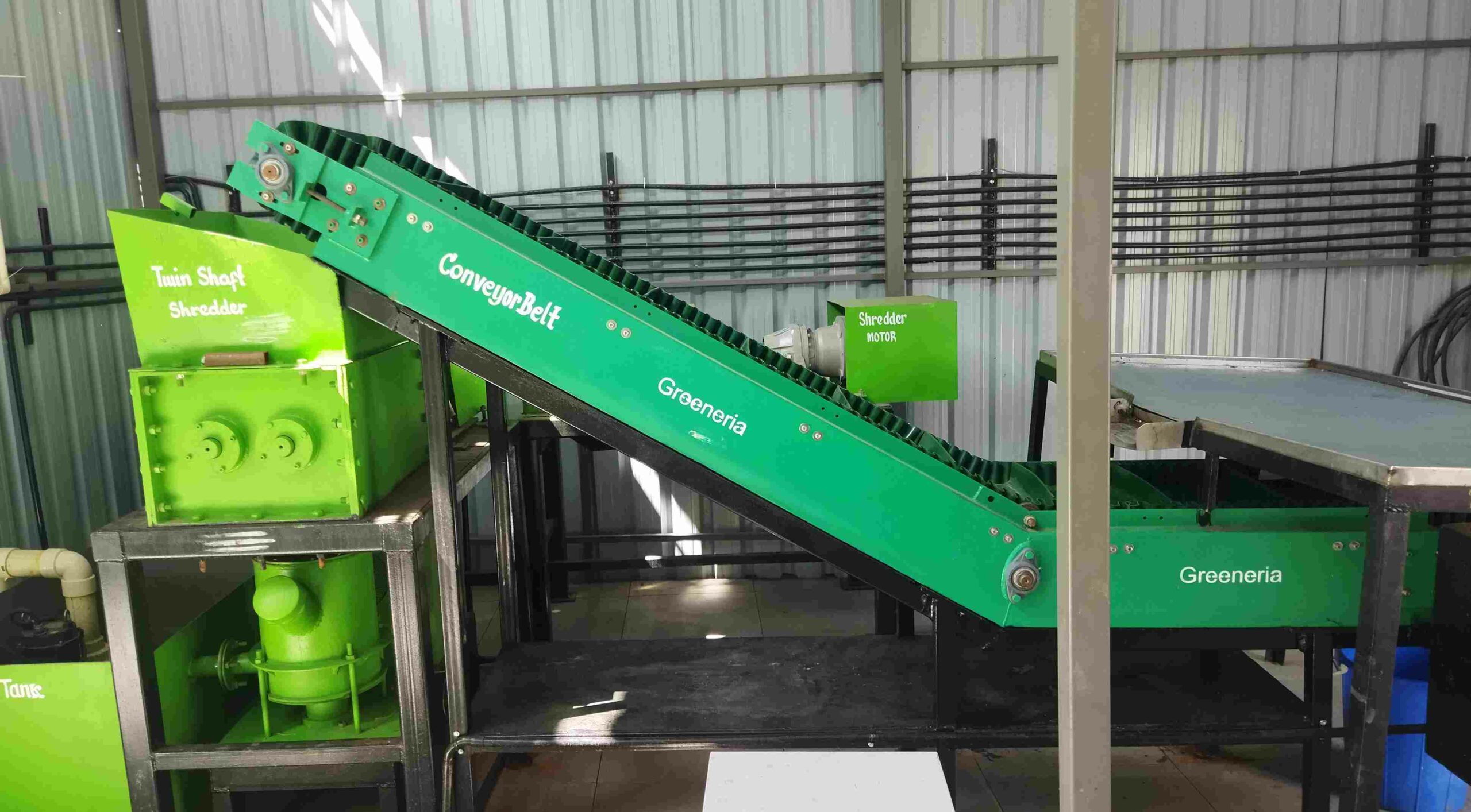
Compared to composting systems, which he says can be messy, emit strong odours, and attract pests, biogas systems offer a cleaner and more enclosed solution. In apartments or shopping malls, the unpleasant smell and associated issues like mosquito infestation are avoided with biogas systems. Despite the similar pricing, a life cycle analysis shows that biogas systems are more environmentally friendly, especially in the context of decentralised waste management, he informs.
“In centralised waste management, many governments invest in large compost plants, which can lead to issues like methane emissions, if not properly managed. Methane is much more harmful than CO2 when released into the atmosphere. So I advocated for a shift from large-scale composting to odour-free biogas systems,” he adds.
Greeneria proposed the idea to various Government officials, emphasising the benefits of biogas systems. These systems not only produce gas but can also power community kitchens or gas power generators for streetlights and common area lighting. “I’ve successfully implemented this concept in collaboration with more than 30 to 40 municipalities across India,” says Kumar, adding that he advocates decentralised waste management as it’s much easier to segregate waste in smaller quantities.
He further informs that the cost of biogas systems becomes more economical as the number of apartments increases. “For example, in a 1,000-apartment complex, the cost is approximately Rs 35 lakh. When divided among the apartments, it’s a one-time cost of Rs 3,500 per apartment, serving them for 35 years, providing both electricity and fertiliser. Similarly, for a 500-apartment complex, the cost per apartment is around 4,000 rupees, making it an affordable investment.”
He adds that this approach not only makes waste management affordable for apartments but also teaches children the importance of segregation, ensuring a cleaner environment for the future.
“Additionally, we’ve introduced a leasing model, making us one of the first companies in India to offer leasing options for apartment associations, five-star hotels, tech parks, and other creditworthy customers,” he says, adding that they proudly hold the certification as the only IIT (Indian Institutes of Technology) certified biogas plant contractor in India.
He adds that they are currently developing advanced segregation equipment. When municipal waste is input into the hopper, the output will be 95% segregated. The equipment will soon be available for market operations.
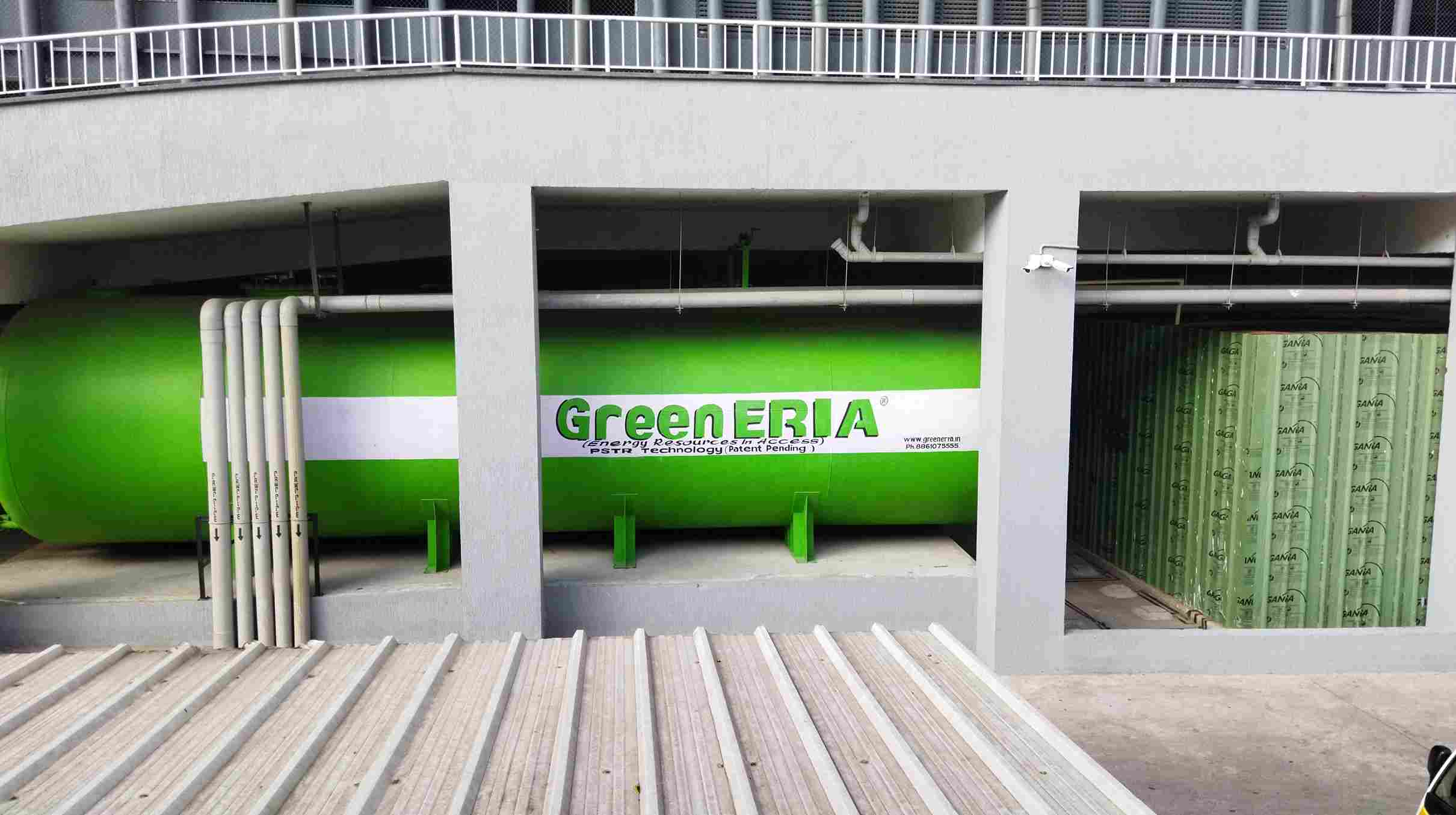
Fueling streets, corporations, and the Rashtrapati Bhavan
Greeneria stands out not only for its commitment to sustainability but also for its technical expertise. The team has studied temperature-yield relationships, incorporating thermostat controls, and delved into the impact of agitation on yield. Their approach of incorporating both agitation and temperature controls sets them apart from other biogas companies in India.
Kumar says one of their significant projects is at the Rashtrapati Bhavan in New Delhi — which has the world’s largest presidential acreages, surpassing the White House in size. “Our system efficiently manages its challenging waste, including horse dung!”
Additionally, Greeneria collaborated with Prayagraj Smart City to illuminate 900 streetlights using 15 tonnes of organic waste. In Dharamshala and Belagavi, five tonnes of organic waste power 450 streetlights each.
Furthermore, corporations like Hewlett Packard, and Capgemini are making strides in waste management. For instance, in Hinjewadi, Pune, 6,000 employees from Hewlett Packard generate one ton per day (TPD) of waste, producing 35 kg of gas, equivalent to expensive LPG. “By converting waste into biogas and fertiliser, these companies not only reduce LPG bills but also obtain organic fertiliser as an additional asset for their large campuses,” he explains.
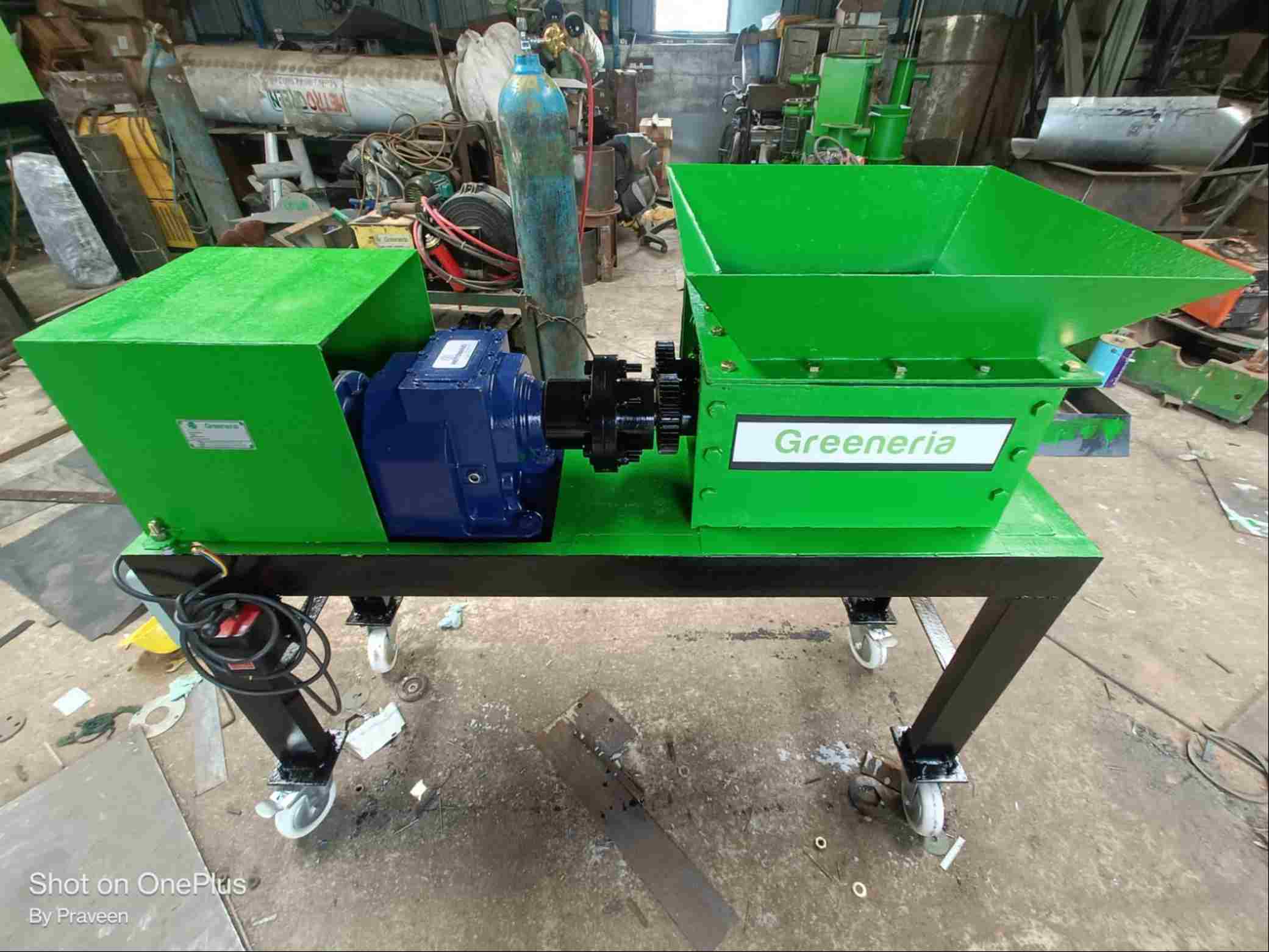
With over 277 installations across the country, Greeneria continues to address challenges in distributing biogas efficiently. Kumar suggests converting biogas into electricity or directing it to shared spaces for community use, turning waste management into a corporate social responsibility initiative.
“Sunlight is necessary for solar energy, and wind is needed for wind energy. However, there’s always a lot of waste in towns and villages. By using waste for biogas, you get three benefits in one — fertiliser, useful gas, and efficient waste management. That’s why I call it the king of renewable energy!” he says.
Greeneria is a testament effective to the power of perseverance and innovation in addressing pressing environmental issues. The company is not only contributing to a cleaner, more sustainable India but also setting an example for businesses worldwide to embrace eco-friendly practices.
As Kumar aptly puts it, “One of the simplest ways to express patriotism towards India is by segregating our waste. Adopt a two or three-bin system. Use one bin for electronic waste and hazardous materials, another for organic waste (coloured green), and a third for dry waste (coloured blue).” If you found our stories insightful, informative, or even just enjoyable, we invite you to consider making a voluntary payment to support the work we do at The Better India. Your contribution helps us continue producing quality content that educates, inspires, and drives positive change. Choose one of the payment options below for your contribution- By paying for the stories you value, you directly contribute to sustaining our efforts focused on making a difference in the world. Together, let’s ensure that impactful stories continue to be told and shared, enriching lives and communities alike. Thank you for your support. Here are some frequently asked questions you might find helpful to know why you are contributing?

“Let’s make sustainability a part of our daily thought process and actions for a better environment for our children and future generations,” he adds.
(Edited by Padmashree Pande, All photos courtesy Greeneria)
This story made me
-
97
-
121
-
89
-
167














